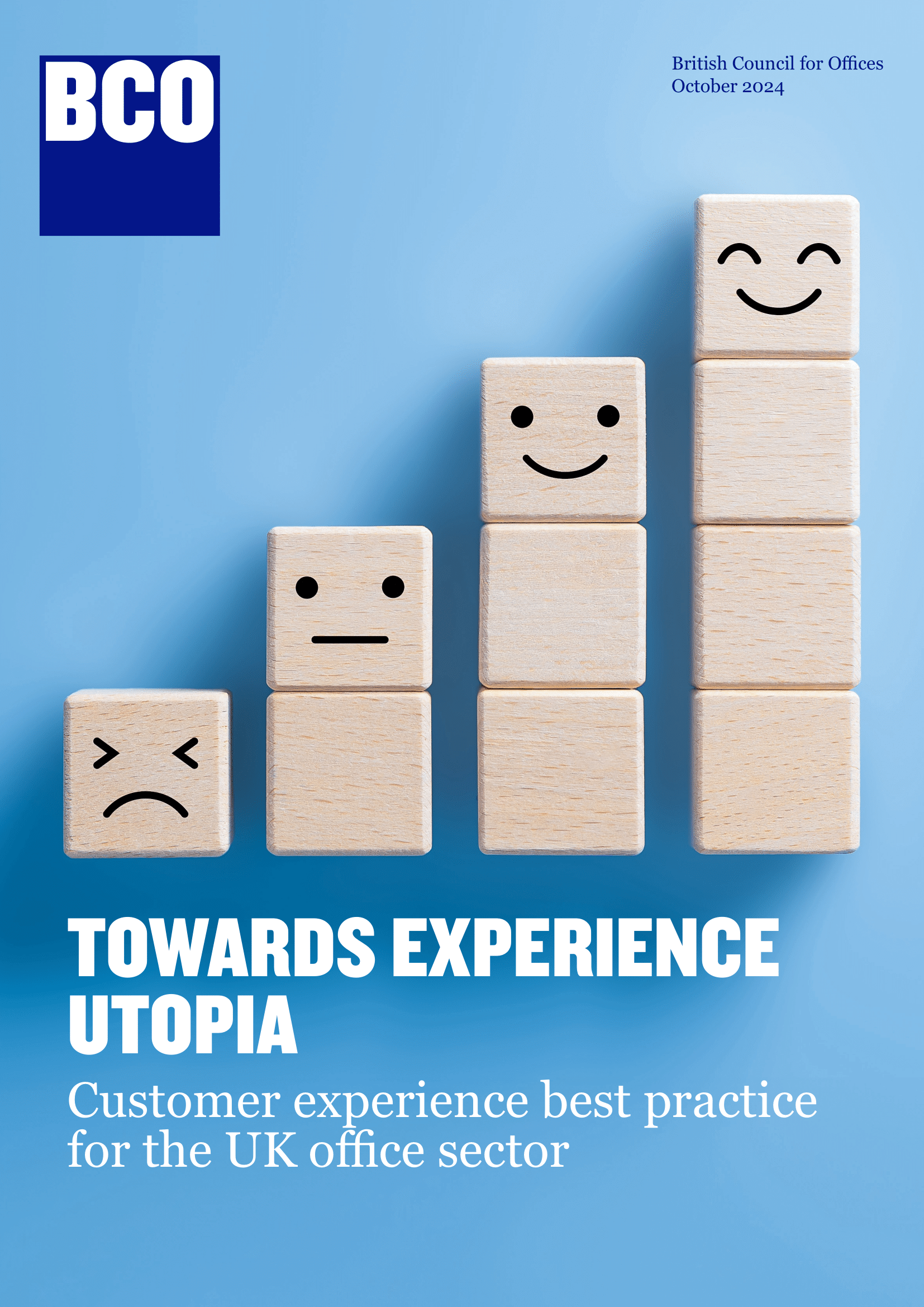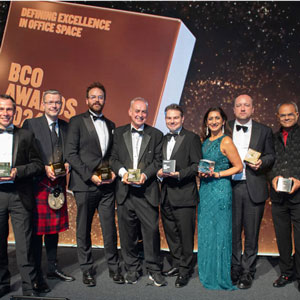Research launch and seminar: The Productive Office

On Wednesday around 100 BCO members attended the launch of ‘The Productive Office’ at CMS, Cannon Street, London to participate in a thought-provoking discussion. The physical environment is understood to be a critical factor when it comes to productivity in offices and ultimately the success and longevity of leading companies. The latest BCO research examines how the physical design and management of offices can influence both individual and organisational productivity.
The first part of the seminar focused specifically on workplace design and the research findings were presented by Adam Mactavish of Currie & Brown who lead the BCO’s latest work ‘Defining and measuring productivity in offices’. Adam shared valuable insights on the work they have been carrying out over the last four months with special thanks to Ramidus Consulting and Despina Katsikakis who added valuable industry experience looking at the influence of the workplace itself on productivity with examples. A series of interviews and workshops took place with people in the supply chain. Productivity seems to be the buzz word at the moment and is either the source of all scepticism or the source of all opportunity depending on your perspective.
Adam spoke about some of the lower hanging fruit that makes a valuable contribution to productivity, that which is readily available to us now, and opportunities that we are already aware of as property professionals improving productivity in UK offices. Adam questioned whether we were doing it as widely and routinely across the UK as we could. Those involved in corporate real estate are often more focused on the cost of property rather than the opportunity the property presents to them.
Adam began by addressing the definition of productivity in offices and how we can go about measuring and improving it. The report hopes to encourage industry professionals to occupy more productive workplaces or to improve the workplaces they are currently in. There was a deliberate attempt not to replicate the tremendous amount of research on productivity already out there. The study instead provides a framework that people can use when discussing productivity so as an industry we are consistent in our approach.
The report covers the influence of the workplace on productivity and stresses that although the office itself is important, it is only one of several dimensions. There are short sections on the value of productivity, recognising productivity and measurement of productivity in the workplace. Starting with the influence of the workplace, the report looks at the office as a tool to deliver change within an organization, to help embody the company culture, provide facilities and at its heart provide the opportunity for people to be able to do their work well. As ever, it’s also about attracting and retaining the best people. The report covers the many factors which influence engagement with the workplace. There are many buildings toured at every BCO conference and there have been examples of companies trying to adopt agile working practices while not having sufficient WiFi to enable people to move from place to place and connect properly. Kate Vine of Perkins + Will brought this up later in the panel discussion- ‘We love to design beautiful spaces, but also – the technology has to work and the environment has to be healthy for the office to be productive’.
Session 2 of the seminar was dedicated to the impact of environmental qualities on productivity. In this section LCMB together with their Consortium Partners (including the BCO) outlined their interim findings on WLP+ (The Whole Life Performance) project, funded by Innovate UK. The project seeks to empirically validate the link between indoor environmental conditions and staff utilisation, output and absenteeism, by demonstrating the solution in three commercial case study buildings where there is available data on staff productivity.
Managing Director of LCMB, John O’Brian, kicked off the introduction to WLP+ saying that productivity in the UK has flat-lined since 2008. The industrial partners included Argent, Kings College London, EMCOR UK, Constructing Excellence, and the academic lead Rajat Gupta of Oxford Brooks University. Members were shown the results we are starting to see and Rajat presented some early findings and insights around office air quality and the impact this has on productivity. For the last 17 years they have studied over 200 buildings and concluded that when occupants are satisfied with their indoor environment, productivity levels increase.
Steve Dolan, Senior Account Director, EMCOR UK presented the first case study which covered the NATS analysis and the correlation between facilities management and productivity. EMCOR UK is the FM provider for NATS, one of the trial sites for the study. A second case study followed from Nick O’Donnell, Director of Estates & Facilities, King’s College London. Nick went over how a drop in oxygen in their office directly affected staff performance and while basic, an improvement in morale and productivity was seen once there was an increase in oxygen levels. Lastly Peter Runacres, Senior Projects Director from Argent presented a third case study before the panel closed with a Q&A. Peter made mention of the levels of CO2 being extraordinarily high in meeting rooms where staff should be most productive, for example in a board meeting.
WLP+ is a benchmark approach. It aims for the tested solution to then be developed into a software-based supervisory control and reporting solution operating in a cloud environment, with the capability to reset the controlled environment to maximise occupant productivity and comfort conditions, whilst minimising energy and fuel use and costs in commercial office environments. Learn more about how the WLP+ project is progressing: https://www.wlpplus.com/project-overview/
-Access the BCO research page and download the report.
-Follow the conversation on Twitter .
-Photo by Timothy Soar



